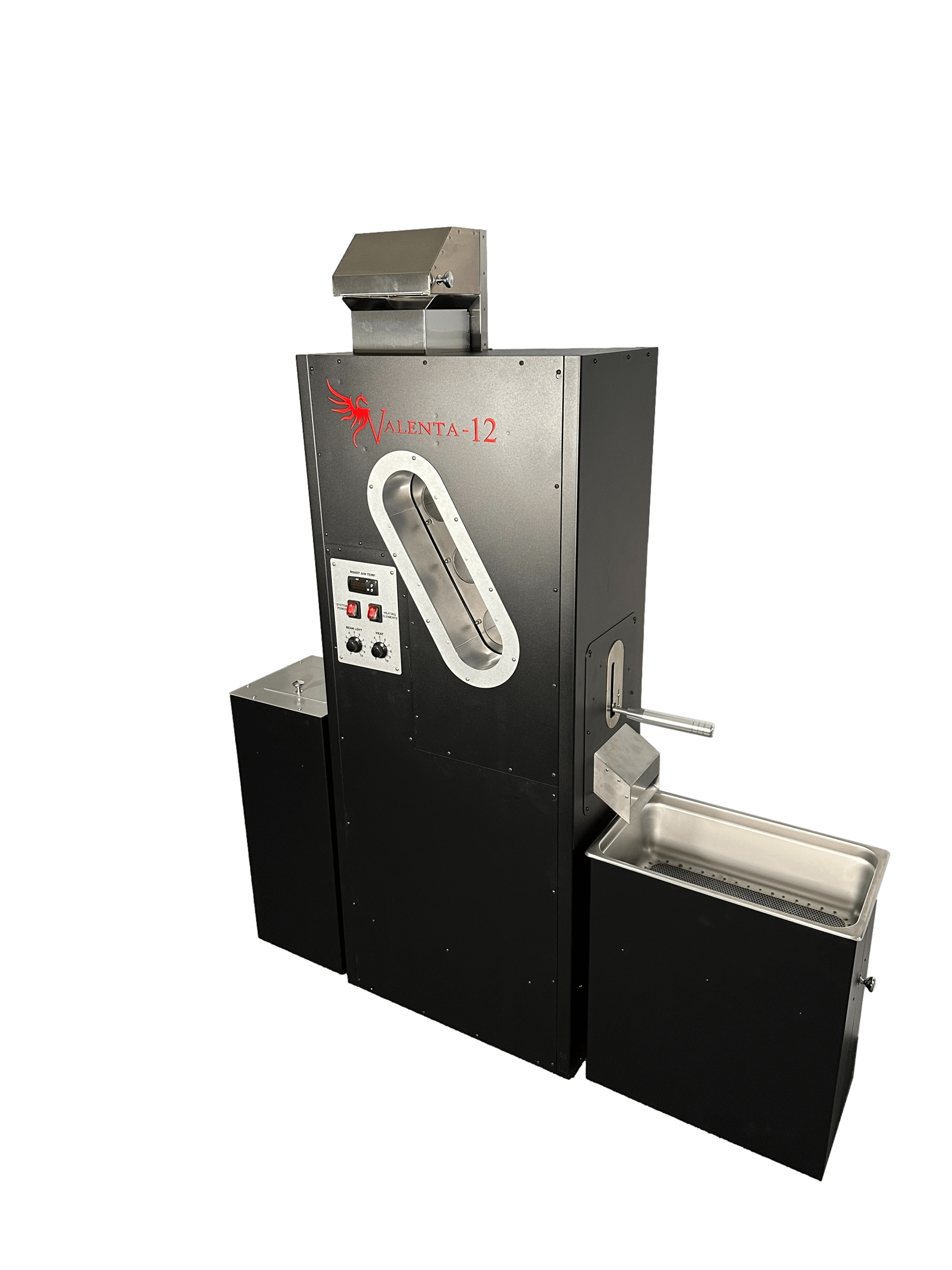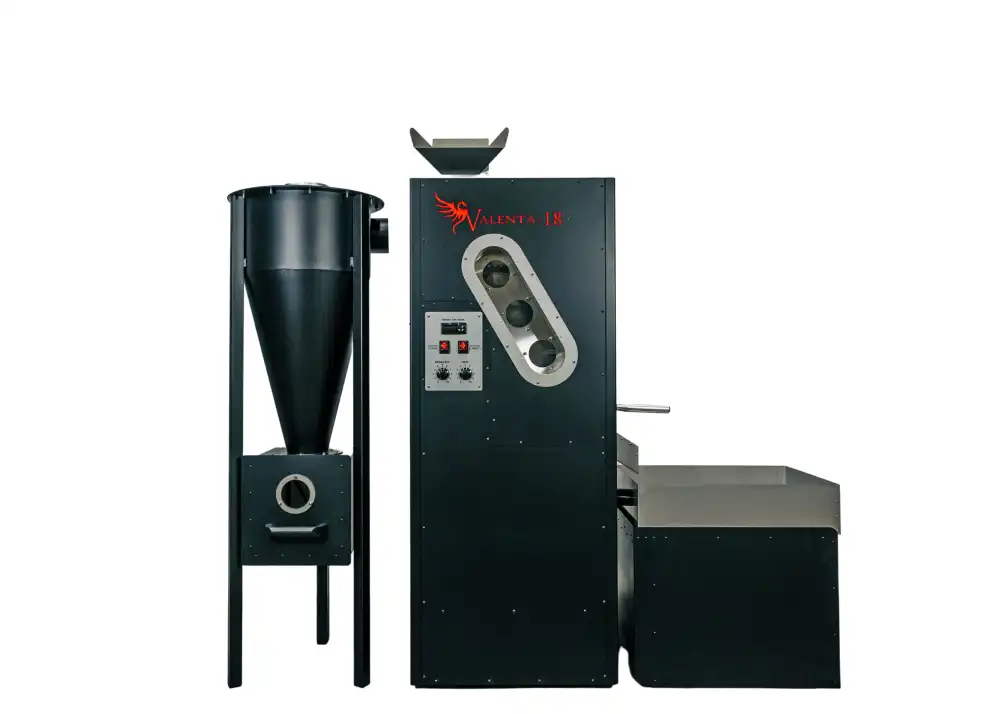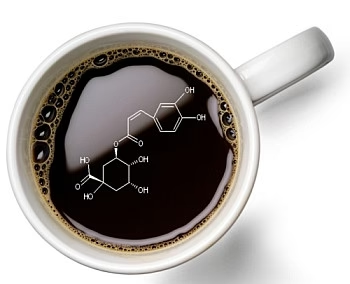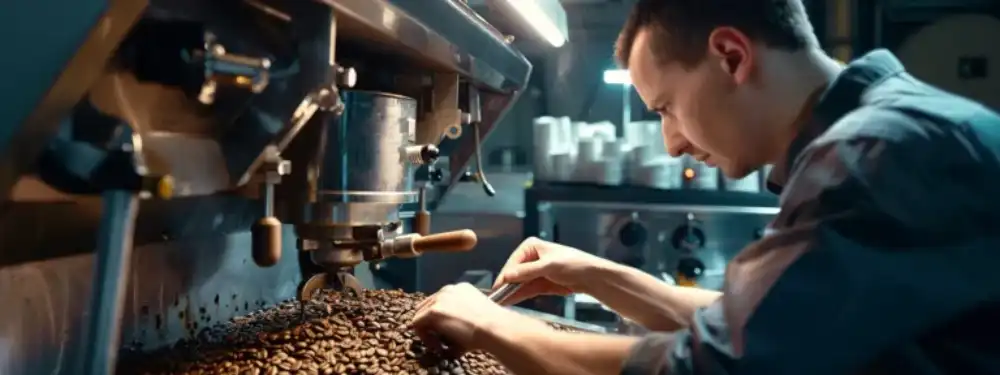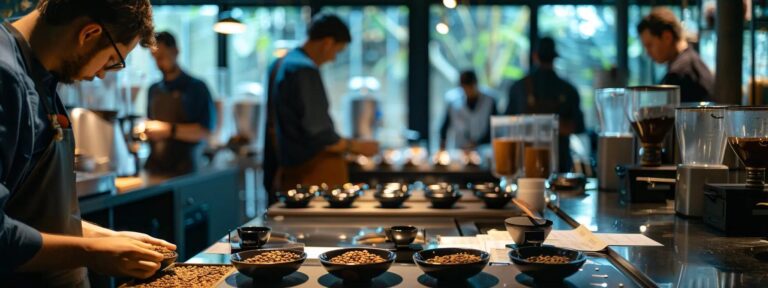Ready-To-Drink Introduction
Across the specialty-coffee world, ready-to-drink coffee is no longer a novelty. It has become one of the fastest-growing beverage segments on the planet. From single-origin cold brews to nitro coffee cans, drinkers want café-level flavor they can carry anywhere. At the center of this shift are small roasters who understand both sides of the equation: quality and convenience. They are merging craftsmanship with precision technology, creating small batch RTD coffee that expresses the same care as a hand-poured espresso.
Global forecasts show that the RTD coffee market will surpass 60 billion USD by the end of the decade, fueled by eco-friendly coffee packaging, digital marketing for coffee brands, and a consumer desire for traceability. The third wave coffee roasters who once focused exclusively on cafés are now shaping canned and bottled products that retain the depth and aroma of a fresh brew. These innovators are proving that the future of coffee belongs to those who combine sustainability, storytelling, and science.
At Coffee Crafters, this evolution is familiar. The same principles that built reliable roasting equipment for independent cafés — efficiency, precision, and value — are now empowering roasters to expand into the RTD arena. From artisan cold brew start-ups to established regional producers, the company’s tools and expertise help bridge the gap between traditional roasting and modern beverage production.
| Market Insight | 2025 Projection | Specialty Segment Share |
|---|---|---|
| Global RTD Coffee Market | ≈ 60 billion USD | 15 – 18 % and rising |
| Growth Drivers | Convenience, sustainability, flavor innovation | Direct trade and traceability |
The Rise of RTD Coffee
RTD coffee’s rise began with cold brew, a smooth, low-acid style that resonated with health-conscious consumers. Over time, it expanded into nitro cold brew coffee, sparkling espresso tonics, and shelf-stable oat-milk lattes. Each version introduced a new audience to premium coffee without requiring grinders or brew gear.
What sets this wave apart is authenticity. Consumers want to know the source of their beans, the ethics of the farms, and the carbon footprint of the packaging. Specialty coffee cans deliver on these expectations by emphasizing direct trade coffee sourcing and transparent supply chains. Small roasters who once sold whole beans are now designing beverages that showcase origin, altitude, and roast curve right on the label.
The About Coffee Crafters page outlines a similar mission — helping artisans maintain integrity while scaling operations. By applying that philosophy to the RTD segment, roasters are turning what used to be an industrial product into an expression of craftsmanship.
The Role of Small Roasters in Innovating RTD Coffee
Independent roasters excel because they can move quickly. Without corporate layers, they can test new profiles, alter brewing ratios, and adjust packaging within days. This flexibility encourages experimentation with innovative cold brew recipes and sustainable coffee farming partnerships that enrich both flavor and community welfare.
A typical production cycle begins with single-origin cold brew experimentation. Roasters analyze bean solubility, roast time, and extraction yield to craft distinct cold brew flavor profiles. They then pair those flavors with biodegradable coffee packaging or recyclable aluminum to maintain freshness. The result is a handcrafted cold brew that is portable, planet-friendly, and profitable.
For real-world examples, the Coffee Roasters section of Coffee Crafters’ site highlights operations that have taken these concepts from pilot runs to regional distribution, proving that innovation does not require massive infrastructure — just precision and passion.
Exploring the Origins of Coffee Innovation
How Specialty Roasts Influence RTD Formulas
Every RTD coffee starts with a green bean chosen for its chemistry. Roast level directly affects extraction time, solubility, and stability. Light roasts emphasize acidity and fruit; medium roasts yield sweetness and balance; dark roasts emphasize body and bitterness — each suiting a different product style.
| Roast Type | Flavor Notes | Ideal RTD Use |
|---|---|---|
| Light | Citrus and floral | Bright refreshing cold brews |
| Medium | Caramel and nutty | Balanced core for latte bases |
| Dark | Cocoa and spice | Milk-based RTDs or dessert drinks |
Producers equipped with Coffee Crafters systems use sensors and data logging to preserve precision from roast to can. Those interested in the technical side of extraction can read Mastering Cold Brew Chemistry: Yield and Temperature Explained, which details how brew temperature and particle size influence sweetness and caffeine balance.
The Shift from Bean to Bottle
Moving from roasted beans to sealed cans requires engineering discipline. Oxygen exposure must stay below 0.5 ppm to prevent oxidation; filtration down to one micron ensures clarity; nitrogen purging creates shelf stability. These steps preserve both the sensory profile and the ethical story behind each bean.
This transformation has sparked interest in coffee bean traceability systems that follow a product from farm to consumer barcode. When paired with automated brewing controls such as Co-Pilot automation technology, consistency becomes measurable. Readers can explore this integration in Achieving Automation Consistency with Co-Pilot Solutions.
Sustainable Sourcing and Ethical Practices
Small Roasters’ Commitment to Sustainability
Sustainability is the heartbeat of small-batch roasting. Producers who embrace direct relationships with farmers gain more than supply security — they gain insight. They know which micro-lots rely on shade trees, which cooperatives invest in water reclamation, and how fermentation methods influence body and sweetness. These practices fall under the umbrella of sustainable coffee farming, ensuring both environmental and economic resilience.
Typical sustainability initiatives include:
- Transitioning to renewable-energy roasteries
- Using eco-friendly coffee packaging or lightweight cans
- Offsetting carbon through local tree-planting programs
- Sharing profits with producer communities
Such choices may seem modest individually, yet collectively they reshape the industry. As consumer awareness rises, traceable RTD coffee becomes the standard rather than the exception.
Impact of Ethical Sourcing in RTD Products
Ethical sourcing affects flavor as much as branding. Beans cultivated in biodiverse ecosystems often yield more stable oils and sugars, resulting in smoother cold brews and nitro infusions. Producers emphasize this link between sustainability and quality through digital storytelling, QR-code farm profiles, and transparent pricing disclosures.
Readers interested in how ethical sourcing connects to flavor can explore Understanding Sustainable Coffee Bean Sourcing for Farmers. It illustrates how direct trade coffee sourcing empowers growers while giving roasters consistent, high-scoring lots ideal for ready-to-drink development.
Crafting Unique Flavor Profiles

Experimentation with Ingredients
The most exciting part of small-batch RTD coffee production is the experimentation that happens at every stage of development. Roasters explore how different water chemistries, brew temperatures, and steeping times bring out new sensory dimensions in the coffee. They play with ratios, natural sweeteners, and flavor infusions to build a balanced drink that highlights the bean’s natural character rather than masking it.
Small teams have the flexibility to adapt to customer feedback instantly, allowing them to evolve recipes over weeks instead of quarters. Some integrate locally sourced ingredients—lavender from regional farms, raw honey, or citrus zest—to create flavor bridges between origin and place. Others test alternative processes such as flash brewing or chilled espresso extractions that enhance the coffee’s natural sugars without added sweeteners.
Experimentation also extends to nitro infusion. By introducing nitrogen during packaging, roasters create smooth microbubbles that soften texture and enhance aroma. This technique, combined with specialty coffee cans, has redefined what consumers expect from a ready-to-drink beverage.
The Balance of Flavor and Convenience
Balancing flavor integrity with convenience is the defining challenge of RTD innovation. Shelf stability demands low oxygen and consistent acidity, while consumers demand freshness and body. Small roasters often turn to cold filtration and micro-lot blending to strike that equilibrium.
The resulting drinks offer café-quality complexity while surviving long distribution chains. Roasters who once crafted limited batches now deliver uniform quality nationwide without compromising on ethics or flavor. Coffee Crafters’ roaster systems, equipped for repeatable precision, allow producers to duplicate successful roast profiles at scale.
Many roasters publish detailed extraction metrics directly on their cans, such as Total Dissolved Solids (TDS) and brew ratios, to help consumers understand why a particular cold brew stands apart. These transparency practices mirror the specialty coffee world’s devotion to traceability and help position RTD coffee as a product of both art and science.
Let Coffee Crafters Help You Become A Coffee Roaster

Technology in Brewing and Packaging
Advances in Cold Brew Technology
Cold brew has transitioned from a manual steeping method to a process controlled by sensors and algorithms. Modern systems measure extraction curves, water temperature, and pH levels throughout the cycle to maintain repeatability. AI-driven software predicts curve drift and adjusts variables earlier in the process, reducing waste and ensuring uniform taste.
Coffee Crafters has long supported this data-driven approach. Their equipment integrates monitoring tools that give roasters granular control, reducing energy use while increasing throughput. This combination of efficiency and precision makes advanced cold brew technology accessible to smaller producers who once struggled to compete with corporate bottlers.
Nitro integration and real-time QC dashboards now allow roasters to view production metrics on their mobile devices. These innovations provide both scalability and sustainability—a hallmark of small batch RTD coffee excellence.
Eco-Friendly Packaging Solutions
The evolution of packaging has been equally transformative. Consumers increasingly choose brands that commit to eco-friendly coffee packaging, recyclable aluminum, or biodegradable materials. In response, small roasters are partnering with suppliers who offer lightweight, low-carbon cans and labels made from post-consumer fibers.
Reducing the carbon footprint goes beyond materials. It includes optimizing transport routes, using renewable energy in packaging plants, and minimizing water use in sterilization processes. Some roasters even launch digital recycling initiatives where customers scan QR codes to learn where and how to recycle locally.
Packaging is not just a container—it’s a communication tool. When a customer picks up a can and sees notes like “direct trade,” “carbon neutral,” or “sourced from Rainforest Alliance farms,” it becomes an educational experience that connects ethics and flavor.
Collaboration and Partnerships in the Coffee Industry
Building Bridges Between Roasters and Retailers
The RTD boom has encouraged unprecedented collaboration between small roasters, cafés, and grocery retailers. Independent producers now partner with local stores and online distributors who understand the value of artisan cold brew. Retailers, in turn, benefit from the authenticity and community engagement these partnerships bring.
Roasters often share equipment and co-packing facilities, lowering barriers to entry. Joint branding projects allow emerging names to appear beside established ones, giving consumers greater variety and trust. Collaborations extend to shared marketing efforts that highlight locally sourced coffee beans and ethical practices.
The Coffee News section frequently covers how these collaborations lead to faster innovation cycles and stronger regional supply chains, proving that cooperation can outpace competition in this market.
Collaborative Projects Shaping New Products
Collaborative RTD projects often lead to entirely new beverage categories. Some combine cold brew with plant-based milks sourced from regional suppliers. Others infuse natural adaptogens or functional ingredients to appeal to wellness-focused consumers.
Examples include partnerships where coffee roasters join forces with local breweries or kombucha producers to explore hybrid drinks. These ventures share both risk and reward while demonstrating that creativity thrives when resources are combined.
Partnerships also encourage cross-training. Baristas learn packaging standards, while production teams gain sensory cupping skills from café professionals. The result is a generation of coffee entrepreneurs fluent in both roasting and ready-to-drink execution.
Marketing Strategies for Modern Consumers
Targeting the Millennial and Gen Z Demographics
Millennials and Gen Z have become the driving force behind RTD coffee’s rise. These consumers value sustainability, digital storytelling, and instant gratification. They want beverages that align with their lifestyle and ethics while offering bold, modern flavors.
Brands appeal to these demographics by focusing on single-origin cold brew, social responsibility, and sleek minimalist packaging. Many campaigns emphasize that drinking a small batch RTD coffee supports fair labor and eco-friendly sourcing.
Millennial buyers often discover new products online through social media posts and influencer reviews. Roasters leverage digital marketing for coffee through targeted ads, video storytelling, and educational content that highlights production methods. By combining authenticity with online visibility, they attract both loyal customers and first-time drinkers.
Utilizing Social Media and Digital Marketing
Digital platforms have become essential for educating and engaging coffee consumers. From short-form videos that show roasting behind the scenes to blog posts about cold brew coffee benefits, content marketing now drives brand awareness as much as flavor does.
Effective campaigns link directly to pages like Coffee Roasting and Customer Stories, where readers can explore how local businesses turn beans into community brands.
Roasters use analytics to test which messages resonate most—stories about biodegradable packaging, direct trade sourcing, or nitro cold brew coffee tend to outperform generic advertising. Social media also enables real-time feedback loops, helping small teams adjust strategy quickly without large budgets.
Sign up For Exclusive Deals
And MUST-HAVE Offers
VALID FOR NEW AND EXISTING Customers
Consumer Education and Engagement
Educating Consumers on Coffee Quality
The modern coffee audience craves knowledge. They want to understand the science behind flavor, from water temperature to roast chemistry. Small roasters transform this curiosity into loyalty by offering tastings, workshops, and transparent data on brew parameters.
Education also builds appreciation for the complexity of sustainable coffee farming. When consumers learn how shade-grown cultivation enhances biodiversity or how altitude shapes acidity, they become advocates for ethical sourcing.
Brands such as those featured on Coffee Talk use their digital presence to teach the fundamentals of flavor profiling and sensory training. This not only enriches customer understanding but also strengthens the perception of RTD coffee as a premium, knowledge-driven product.
The Role of Tasting Events and Pop-Ups
Pop-up cafés and mobile tasting stations are becoming a hallmark of RTD brand marketing. They give consumers direct sensory experiences that deepen appreciation for small batch quality. Events are often held at farmers markets, art fairs, or co-working spaces where the target demographic already gathers.
These experiences serve multiple purposes:
- Allowing customers to sample new flavor profiles before purchase
- Collecting real-time feedback for product development
- Sharing sustainability stories directly with the community
Tasting events also double as data-gathering opportunities. QR codes on cans can direct visitors to surveys or email sign-ups, helping roasters refine recipes and build long-term relationships.
Regulatory Challenges and Compliance

Navigating FDA Regulations for RTD Beverages
Behind every beautifully designed can of cold brew lies a maze of compliance work. The ready-to-drink coffee segment must meet food and beverage safety standards defined by the U.S. Food and Drug Administration (FDA), as well as local and state-level agencies. These include guidelines on acidity levels, pasteurization temperatures, packaging sterilization, and accurate ingredient labeling.
Small roasters entering this market often face the steepest learning curve. Unlike fresh café brews, RTD beverages require shelf stability, so they must maintain an appropriate pH (below 4.6 for low-acid foods) or undergo proper thermal processing. Many teams rely on third-party labs to verify these requirements. The focus is not only on quality but also consumer safety and liability mitigation.
As Coffee Crafters continues to provide roasting systems designed for scalability, roasters gain the technical control needed to meet those regulations efficiently. The consistent output of equipment ensures that recipes and roast curves match what’s required for validated production—a key factor when presenting documentation to regulatory agencies or co-packers.
Ensuring Safety and Quality in Production
Safety assurance in RTD coffee production involves more than following checklists. It includes managing traceability, equipment cleanliness, and consistent batch verification. Roasters must track everything from green bean origin to can code, ensuring full transparency across the supply chain.
The adoption of digital traceability systems has made it possible for small producers to operate with enterprise-level oversight. Barcodes, lot numbers, and QR-coded batch sheets now integrate with cloud databases, providing visibility at every stage. These steps also enhance brand reputation; customers increasingly expect proof of both sustainability and food safety.
Readers interested in scalable production and automation can explore Streamline Roasting Operations for Optimal Smart ROI, which discusses how roasters integrate automation for efficiency and compliance.
The Future of RTD Coffee
Predictions for the RTD Market
The RTD coffee market shows no signs of slowing. Industry forecasts predict annual global growth exceeding 8 percent through 2030. This expansion is fueled by innovation, transparency, and a willingness to experiment with flavor. While large beverage corporations dominate distribution, the most dynamic growth occurs among small roasters who leverage direct-to-consumer channels and online retail.
Emerging trends shaping the sector include:
- Continued expansion of single-origin cold brew lines
- Functional additions such as adaptogens, collagen, and vitamins
- Wider use of plant-based and low-sugar options
- Packaging innovations using compostable and lightweight materials
- Data-driven quality management and sustainability verification
Coffee Crafters’ partner network mirrors this momentum. Across hundreds of independent producers, the combination of precision roasting, ethical sourcing, and creative marketing defines what’s next for RTD innovation.
How Small Roasters Continue to Innovate
Innovation in RTD coffee will always start at the small-roaster level. While global players focus on scale, local artisans focus on nuance. They ask how coffee flavor behaves under pressure, how new processing methods can alter acidity, and how packaging design can communicate authenticity.
Many of these roasters now use AI analytics to forecast consumer preferences. By monitoring digital engagement, search trends, and seasonal sales data, they tailor new products to specific audiences. Whether it’s a high-protein nitro latte or a sparkling single-origin cold brew, data ensures that each launch aligns with evolving demand.
Small teams also continue leading on sustainability. From compostable lids to solar-powered roasting facilities, they set the standards for eco-friendly coffee packaging. Their agility allows them to adopt new materials long before major brands can retool factories.
The future also involves new forms of storytelling. Roasters increasingly treat their packaging and social media platforms as educational spaces, where customers learn about cold brew flavor profiles, cold brew versus traditional coffee, and coffee bean traceability in the same post.
These combined efforts turn RTD coffee into a living narrative—one that celebrates both craft and culture, showing how local businesses can compete globally by staying authentic and sustainable.
Key Takeaways
- RTD coffee’s explosive growth is driven by consumer demand for quality, sustainability, and convenience.
- Small roasters play a central role in shaping innovation by testing and refining cold brew techniques.
- Sustainable coffee farming and ethical sourcing strengthen both brand reputation and product flavor.
- Digital marketing for coffee, particularly targeting millennial coffee drinkers, connects education with engagement.
- Eco-friendly coffee packaging and technological precision are now essential, not optional, for market relevance.
| Element | Impact on RTD Market | Future Potential |
|---|---|---|
| Specialty Coffee Cans | Elevates perception of quality | Expands artisan accessibility |
| Sustainable Sourcing | Builds trust and loyalty | Mandatory for premium products |
| Data and Automation | Enables consistency | Key driver for scalability |
| Digital Marketing | Creates transparency | Expands direct-to-consumer reach |
| Collaborative Innovation | Lowers entry barriers | Spurs category diversity |
Frequently Asked Questions
What defines a specialty RTD coffee?
A specialty RTD coffee uses high-quality beans, precise brewing, and transparent sourcing to deliver complex flavors in a convenient format. It is distinguished by its traceability, ethical practices, and quality comparable to fresh café coffee.
How are small roasters competing with large brands?
Small roasters leverage authenticity, agility, and technology. They adapt quickly to trends like nitro cold brew coffee and use direct trade sourcing to produce differentiated products with strong local identity.
Why is sustainability such a big part of RTD coffee innovation?
Sustainability influences everything from bean sourcing to packaging materials. Consumers prefer brands that use eco-friendly coffee packaging, biodegradable containers, and renewable energy in production.
Does RTD coffee taste the same as fresh brew?
Modern cold brew technology and controlled nitrogen flushing preserve aroma and mouthfeel remarkably well. While not identical to a fresh pour-over, today’s small batch RTD coffee can offer comparable depth and balance.
Where can I learn more about roasting and RTD development?
Visit Coffee Crafters to explore educational articles, equipment guides, and stories from small roasters innovating across the RTD landscape.
Conclusion
Ready-to-drink coffee has evolved from a convenience drink to a craft movement. The convergence of specialty roasting, sustainable coffee farming, and digital engagement is reshaping the beverage industry at large. Small roasters, once confined to local cafés, now influence global trends with every can they produce.
By combining precision roasting equipment, ethical sourcing, and storytelling, they are turning cold brew into a cultural symbol—one that represents integrity, community, and the future of coffee itself.
The next wave of RTD coffee innovation belongs to those who dare to merge science with soul. And in that future, the small roaster’s voice is not just relevant—it’s indispensable.
Let Coffee Crafters Help You Become A Coffee Roaster
